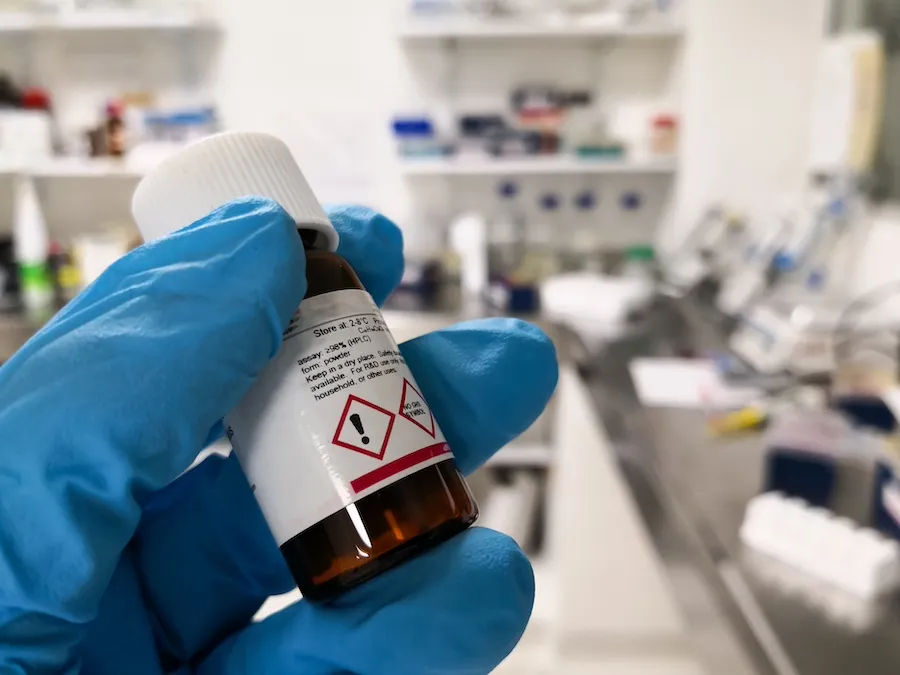
Major changes planned in line with the Green Deal
The European Commission published last October its strategy to implement the United Nations 2030 Agenda and its sustainable development goals. The Green Deal is an integral part of this and therefore aims at eliminating pollution and advocating for a toxic-free environment. One of the first steps in this direction is the Chemical Strategy. It represents an opportunity to encourage innovation in the development of safer and sustainable alternatives and to promote the European industry.
The European Commission has recently published two initial impact assessments on this strategy, leading to the potential reopening and modification of the REACH and CLP regulations and the necessary adaptation by industry.
Regarding the revision of the CLP Regulation, the measures that could be introduced are:
- The introduction of new hazard classes (such as endocrine disruptors) with corresponding criteria
- The introduction of an obligation to provide information on certain hazards on the label
- The introduction of specific rules for online sales
- The introduction of the possibility of submitting proposals and setting harmonised environmental and safety values for certain substances
- The obligation for importers and downstream users to submit information on substances classified as hazards to poison control centres and clarification of the obligations of distributors to submit this information, together with an only representative or other body
- The introduction of a mandate for the Commission to ask ECHA to develop a new harmonised classification and labelling (CLH)
- Allowing multilingual fold-out labels and introducing appropriate labelling rules where there is insufficient space on the packaging
- Simplification and reduction of unnecessary administrative costs
These measures may change depending on the impact assessment and advice provided.
Possible consequences and concerns of companies regarding the reopening of the CLP Regulation
The CLP regulation concerns many actors, and aims to ensure the proper functioning of the chemicals market with a high level of protection for human health and the environment. However, it allows for divergent interpretations and, information on risks to human health and the environment is sometimes incomplete. The identification and classification of substances and the obligations of the different actors are therefore not always clear.
Regulation sometimes has difficulty keeping up with the development of the market, particularly with a lack of guidance for online sales and specific information on the roles and responsibilities of the various players. The European Commission has therefore had to revise its strategy in order to address these gaps.
The planned changes aim to improve the functioning of the chemicals market but, above all, to put Europe in a pioneering role towards safer and more sustainable substances.
Properly characterised and labelled chemicals will improve the working conditions of workers, the protection and awareness of consumers, but also the protection of the environment.
However, changes to the CLP Regulation may have other consequences such as increased costs for additional hazard identification, notification and relabelling, but also for investment and research into safer and less hazardous substances. In addition, divergences from the global UN GHS standards may affect hazard communication for chemicals manufactured in the EU and exported.
Although the planned changes aim to reduce costs for Member States and businesses, these costs are likely to increase as a result of the new obligations introduced.
The ongoing initial impact assessments aims to inform citizens and stakeholders of the European Commission's plans and allow them to provide feedback on the options considered and the possible consequences.
The companies concerned by the CLP regulation were therefore able to give their opinions. On the one hand, industrialists are afraid of the position they will be in because the regulation may make them less competitive compared to non-European companies. Nevertheless, they are aware of the progress that the reopening of the regulation represents and can position themselves as precursors of new regulations.
Wish to know more about the CLP Regulation?

For more information, do not hesitate to contact Renaud Germain-Thomas or one of our experts!
Major changes planned in line with the Green Deal
The European Commission published last October its strategy to implement the United Nations 2030 Agenda and its sustainable development goals. The Green Deal is an integral part of this and therefore aims at eliminating pollution and advocating for a toxic-free environment. One of the first steps in this direction is the Chemical Strategy. It represents an opportunity to encourage innovation in the development of safer and sustainable alternatives and to promote the European industry.
The European Commission has recently published two initial impact assessments on this strategy, leading to the potential reopening and modification of the REACH and CLP regulations and the necessary adaptation by industry.
Regarding the revision of the CLP Regulation, the measures that could be introduced are:
- The introduction of new hazard classes (such as endocrine disruptors) with corresponding criteria
- The introduction of an obligation to provide information on certain hazards on the label
- The introduction of specific rules for online sales
- The introduction of the possibility of submitting proposals and setting harmonised environmental and safety values for certain substances
- The obligation for importers and downstream users to submit information on substances classified as hazards to poison control centres and clarification of the obligations of distributors to submit this information, together with an only representative or other body
- The introduction of a mandate for the Commission to ask ECHA to develop a new harmonised classification and labelling (CLH)
- Allowing multilingual fold-out labels and introducing appropriate labelling rules where there is insufficient space on the packaging
- Simplification and reduction of unnecessary administrative costs
These measures may change depending on the impact assessment and advice provided.
Possible consequences and concerns of companies regarding the reopening of the CLP Regulation
The CLP regulation concerns many actors, and aims to ensure the proper functioning of the chemicals market with a high level of protection for human health and the environment. However, it allows for divergent interpretations and, information on risks to human health and the environment is sometimes incomplete. The identification and classification of substances and the obligations of the different actors are therefore not always clear.
Regulation sometimes has difficulty keeping up with the development of the market, particularly with a lack of guidance for online sales and specific information on the roles and responsibilities of the various players. The European Commission has therefore had to revise its strategy in order to address these gaps.
The planned changes aim to improve the functioning of the chemicals market but, above all, to put Europe in a pioneering role towards safer and more sustainable substances.
Properly characterised and labelled chemicals will improve the working conditions of workers, the protection and awareness of consumers, but also the protection of the environment.
However, changes to the CLP Regulation may have other consequences such as increased costs for additional hazard identification, notification and relabelling, but also for investment and research into safer and less hazardous substances. In addition, divergences from the global UN GHS standards may affect hazard communication for chemicals manufactured in the EU and exported.
Although the planned changes aim to reduce costs for Member States and businesses, these costs are likely to increase as a result of the new obligations introduced.
The ongoing initial impact assessments aims to inform citizens and stakeholders of the European Commission's plans and allow them to provide feedback on the options considered and the possible consequences.
The companies concerned by the CLP regulation were therefore able to give their opinions. On the one hand, industrialists are afraid of the position they will be in because the regulation may make them less competitive compared to non-European companies. Nevertheless, they are aware of the progress that the reopening of the regulation represents and can position themselves as precursors of new regulations.
Wish to know more about the CLP Regulation?

For more information, do not hesitate to contact Renaud Germain-Thomas or one of our experts!







